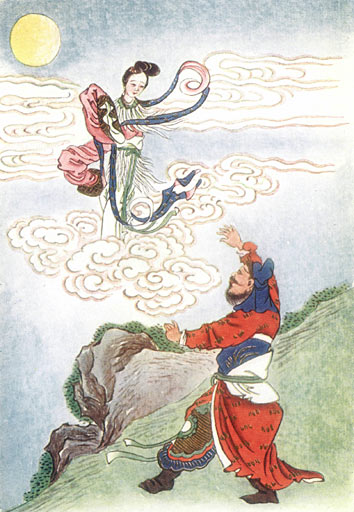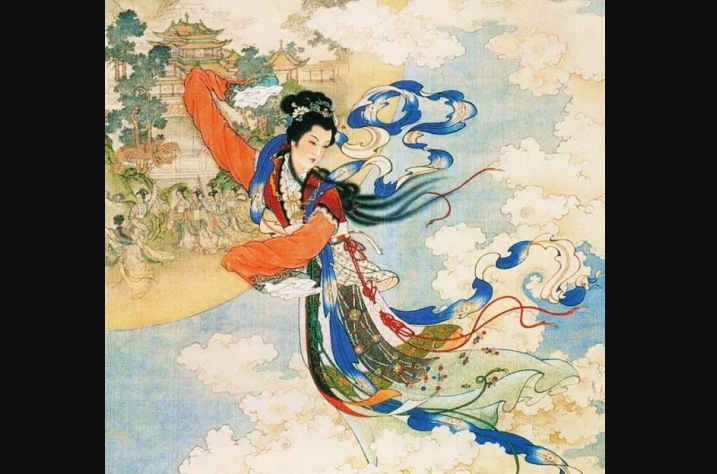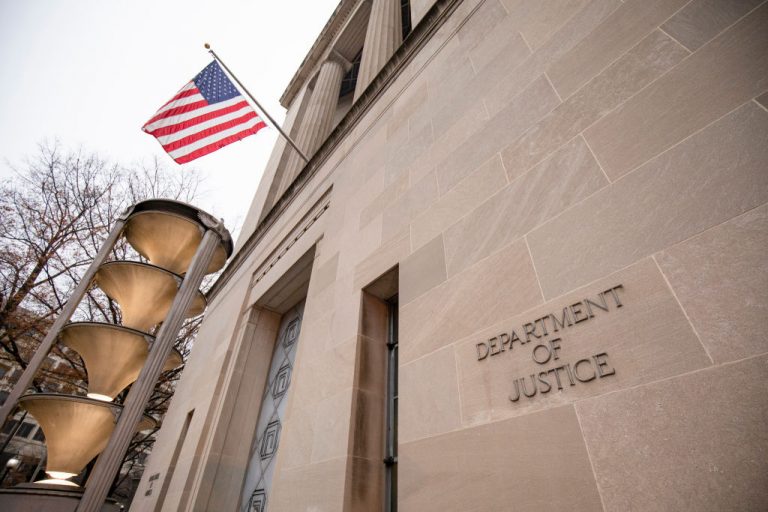After the Lunar New Year, the second-most important Chinese holiday is the zhongqiujie (中秋節), or Mid-Autumn Festival. It is a festival for a reunion under the full moon that often appears on the 15thday of the eighth lunar month, which is the day of Mid-Autumn in the traditional Chinese calendar. This year, it will be celebrated on Monday, September 24 on the Western calendar.
The full moon on this day is a symbol of completion, especially that following a long period of separation. At the center of the Mid-Autumn Festival is the ancient story of Chang’e (嫦娥), the goddess of the moon, and her husband, the divine archer Hou Yi (后羿).
It is said that during the reign of Emperor Yao, 10 suns appeared in the sky, drying the Earth with their scorching heat. Yao prayed to the gods for deliverance, and the Jade Emperor of Heaven answered his pleas, sending the master archer Hou Yi and his wife to the mortal realm.
Hou Yi saw the scenes of devastation that the heavenly calamity had wrought upon the earth and its inhabitants. Filled with pity, he took out his weapon and began to shoot the offending stars one by one until Emperor Yao stopped him, leaving one sun to warm the Earth.

At the center of the Mid-Autumn Festival is the ancient story of Chang’e (嫦娥), the goddess of the moon, and her husband, the divine archer Hou Yi (后羿). (Image: wikimedia / CC0 1.0)
Hou Yi was a hero, but he and Chang’e were stranded in the secular world and hoped to return to the heavens, so the archer made an arduous journey west to Mount Kunlun, the residence of the Lady Queen Mother. She granted Hou Yi one bottle of an elixir which, once consumed, would endow the drinker with immortality.
Success
You are now signed up for our newsletter
Success
Check your email to complete sign up
When Hou Yi returned home, he presented the elixir to Chang’e and told her to keep it safe. But unbeknownst to the couple, a man named Feng Meng saw everything and hatched an evil plan.
Three days later, while Hou Yi was out on a hunt, Feng Meng broke into their home and demanded that Chang’e hand over the elixir. Knowing that Peng would overpower her, she quickly drank the potion rather than betray her husband.
As Hou Yi rushed home to save her, the elixir of immortality caused Chang’e to rise off the ground, flying out the window and toward the heavens. Nothing could stop their separation, but because of their love for each other, Chang’e landed on the celestial body closest to Earth — the Moon.

As Hou Yi rushed home to save her, the elixir of immortality caused Chang’e to rise off the ground, flying out the window and toward the heavens. (Image: wikimedia / CC0 1.0)
Hou Yi, destined to live out his days on Earth without his wife, made offerings of the food she liked and placed them on an altar as a sacrifice. As Chang’e had become the Goddess of the Moon, others followed Hou Yi. The Chinese thus came to pray to Chang’e for peace and luck.
Chang’e’s life in the Lunar Palace was a lonely one. But according to one fairy tale, she received a companion, the Jade Rabbit.
The tale tells of three immortals who transformed themselves into beggars and asked for help from three animals — a fox, a monkey, and a rabbit, The wily fox and the capable monkey both found food to give the beggars, but the rabbit had nothing to give, so it offered its own meat for the immortal to eat.
Moved by the rabbit’s pure heart, the immortals granted the rabbit everlasting life in the Lunar Palace. It is said that when looking closely, the Jade Rabbit can be seen pounding medicine in a mortar.
Follow us on Twitter or subscribe to our weekly email







